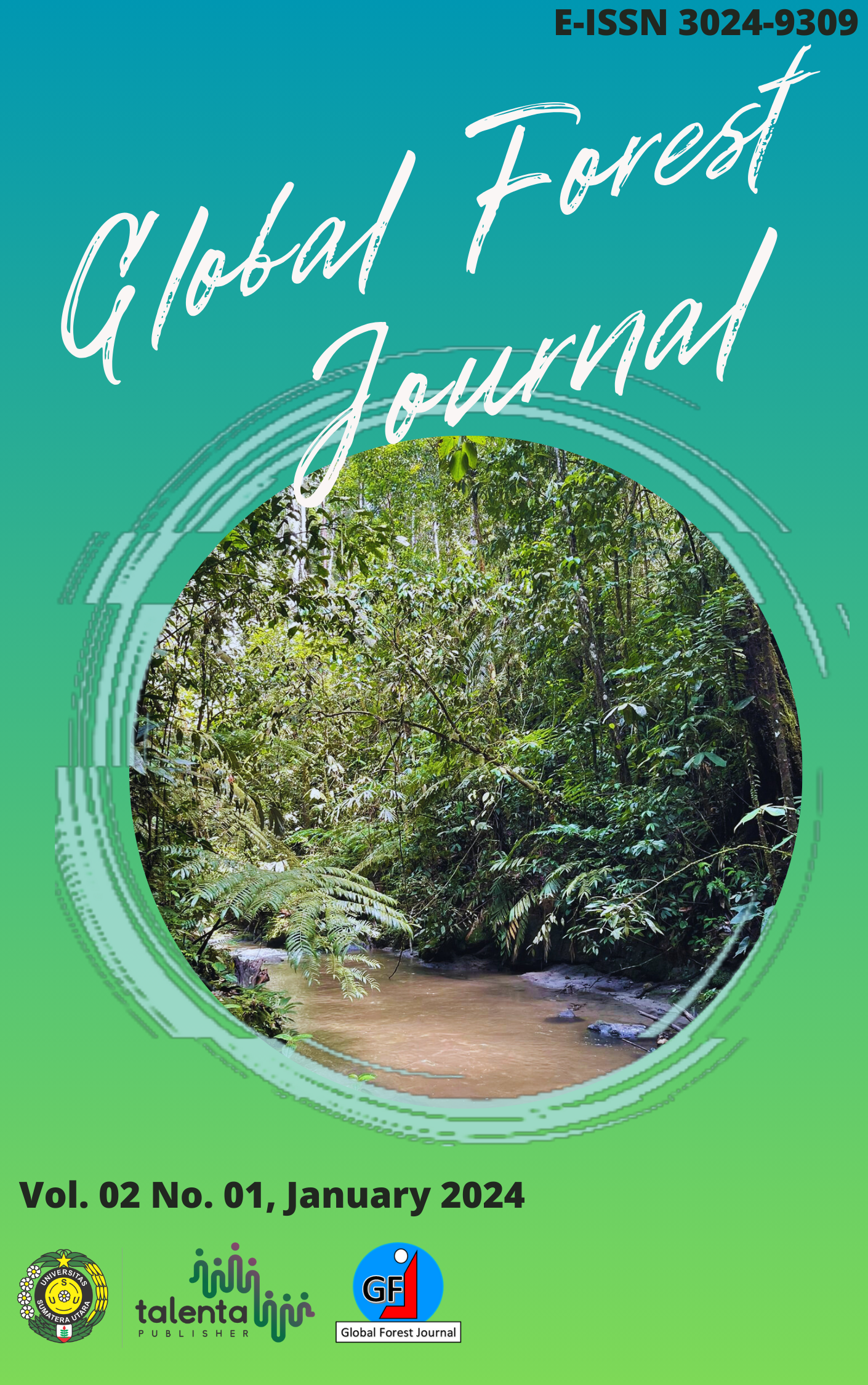Sustainable mangrove management strategy in Sumber Nadi Village, Ketapang District, South Lampung Regency
DOI:
https://doi.org/10.32734/gfj.v2i01.15560Keywords:
Mangroves, Management, Strategy, SWOTAbstract
The sustainability of mangrove forests really depends on the involvement of communities in the areas surrounding the mangrove forests. If the mangrove environment is to be used in the long term, it must be managed and preserved. This research aims to determine strategies for sustainable mangrove management in Sumber Nadi Village, Ketapang District, South Lampung Regency. The method used in this research is a qualitative approach. Data was obtained through in-depth interviews involving key informants who were selected and determined using snowball sampling and analyzed using SWOT analysis of Strengths, Weaknesses, Opportunities and Threats, which includes Natural Resources and Human Resources. The results of this research show that the total value of the influence of internal strategies has a value difference of 0.32. Likewise, the external value has a difference of 0.11. Then, combining the two values of the difference between strengths and weaknesses and opportunities against threats, a coordinate point is obtained, namely the coordinate point (0.32; 0.11). The strategy that must be implemented in Sumber Nadi Village, Ketapang, is to support aggressive growth policies (growth-oriented strategy). Mangrove forest management strategies, as in the quadrant above, show a favorable situation. The relevant agencies, management and the community should support this management development strategy so that it can maintain the potential of existing mangroves
Downloads
Downloads
Published
Issue
Section
License
Copyright (c) 2024 Global Forest Journal

This work is licensed under a Creative Commons Attribution-ShareAlike 4.0 International License.












